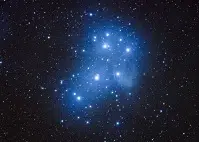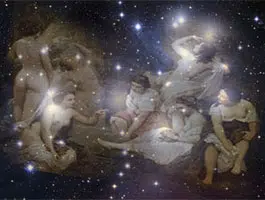 According to the dictionary of the Royal Spanish Academy ( RAE ), a group of famous individuals who were or are contemporaries is called a pleiad . The term, as detailed by the RAE , is usually used above all to refer to writers.
According to the dictionary of the Royal Spanish Academy ( RAE ), a group of famous individuals who were or are contemporaries is called a pleiad . The term, as detailed by the RAE , is usually used above all to refer to writers.
For example: “The plethora of Latin American literature will meet at the next Spanish language congress” , “The capital club aspires to achieve a new title with the plethora of talents it signed in the last market” , “Despite having "With a plethora of figures in its cast , the film was a failure in commercial terms."
A pleiad, in short, is a group made up of great exponents of a discipline . We specifically speak of poetic pleiad to name seven poets from the Hellenistic period, and tragic pleiad to name seven writers of tragedies in the same period.
In colloquial language , however, the notion is usually used with respect to a crowd or an accumulation : “The deputy will have to face a plethora of accusations in court,” “The singer arrived in the country surrounded by a plethora of assistants,” “ The festival will feature the participation of a plethora of rock bands.”
In plural, the idea of Pleiades appears in the field of mythology to mention the descendants of the nymph Pléyone and the titan Atlas . The Pleiades , who were born on Mount Cylene , were seven.
From the mythological story, an open star cluster in the constellation of Taurus was named Pleiades . These Pleiades are hot, middle-aged stars.
The Pleiades are sisters of the Hyades and Hyante; In certain versions of the mythological story , they are also sisters of the Hesperides and Calypso. They were part of the court of Artemis, one of the oldest and most revered goddesses, and they had in common with her their taste for hunting.
Regarding the proper name of these sisters, some scholars point out that it is probably due to the name of their mother, while others believe that it arose from the homonymous star cluster, in whose etymology the idea of "closeness" can be seen.
 It is estimated that the Pleiades exhibited great physical beauty , given that Olympic gods of the importance of Zeus, Ares and Poseidon, among others, were in love with them. Let's see below a brief description of each of the sisters:
It is estimated that the Pleiades exhibited great physical beauty , given that Olympic gods of the importance of Zeus, Ares and Poseidon, among others, were in love with them. Let's see below a brief description of each of the sisters:
* Maya : also known as Maia , she is the eldest of the sisters. She is characterized by her shyness and her beauty. She is the mother of the messenger god Hermes, who she had with Zeus. He was also responsible for raising Arcas, a hero of the Arcadians born to Callisto and Zeus, to prevent him from being harmed by Hera, who had transformed his mother into a bear;
* Celeno : the god Poseidon became interested in her and from this relationship two sons arose, Eurypylus and Lycus. She is also the mother of Deucalión, Chimereo and Caucón;
* Alcíone : like her sister Celeno, she also had several children with Poseidon. Their names vary depending on the source, but among them are Hyrieus, Hyperenor, Lyco, Ethusa, Antas, Glauco and Epopeo;
* Electra : is the Pleiad whose name is more widely known beyond Greek mythology. With Zeus she conceived Dardanus, Emationion and Yasion. Some sources also attribute Harmonía's paternity to this couple. In the Pleiades nebula we find a star of the same name, which was named precisely in honor of her;
* Sterope : also known as Asterope . She had a romance with Ares, the god of war, and with him she had Oenomaus. It is worth mentioning that some sources indicate that Oenomaus' mother is actually Harpina. Two stars in the Pleiades cluster are called Asterope;
* Taygete : Lacedaemon was born from her love relationship with Zeus. There are those who believe that their romance was never consummated because she tried to escape, a decision that cost her her human form when Artemis turned her into a deer;
* Merope : the youngest of the sisters. She is the only one who married a mortal, which is why her star does not shine as brightly as the other six.
